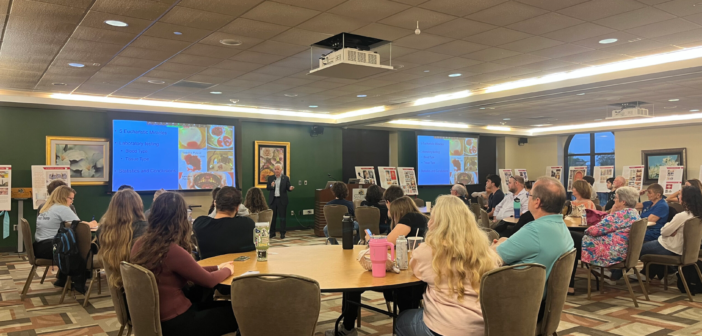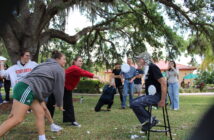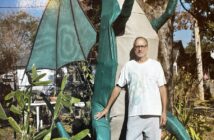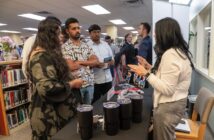By Emily Hernandez Dominguez, Campus News Editor
On Feb. 29, from 6-8pm, guests were invited to enter the SCC boardrooms with an open mind and heart to encounter factual evidence regarding the Eucharist.
The Catholic Church states that during Mass, the bread and wine used for Communion become the body and blood of Jesus Christ. However, according to Pew Research Center , 70 percent of Catholics believe that the body and blood are merely symbolic, not the actual body. Additionally, even 37 percent of those who attend weekly Mass believe they are symbols of the body and blood of Jesus Christ.
As a result of those startling statistics, the National Eucharistic Revival, which launched on the a Pew Research study Feast of Corpus Christi in 2022, is a three-year initiative by the U.S. bishops aimed at inspiring, educating, and uniting the faithful in a more intimate relationship with Jesus in the Eucharist.

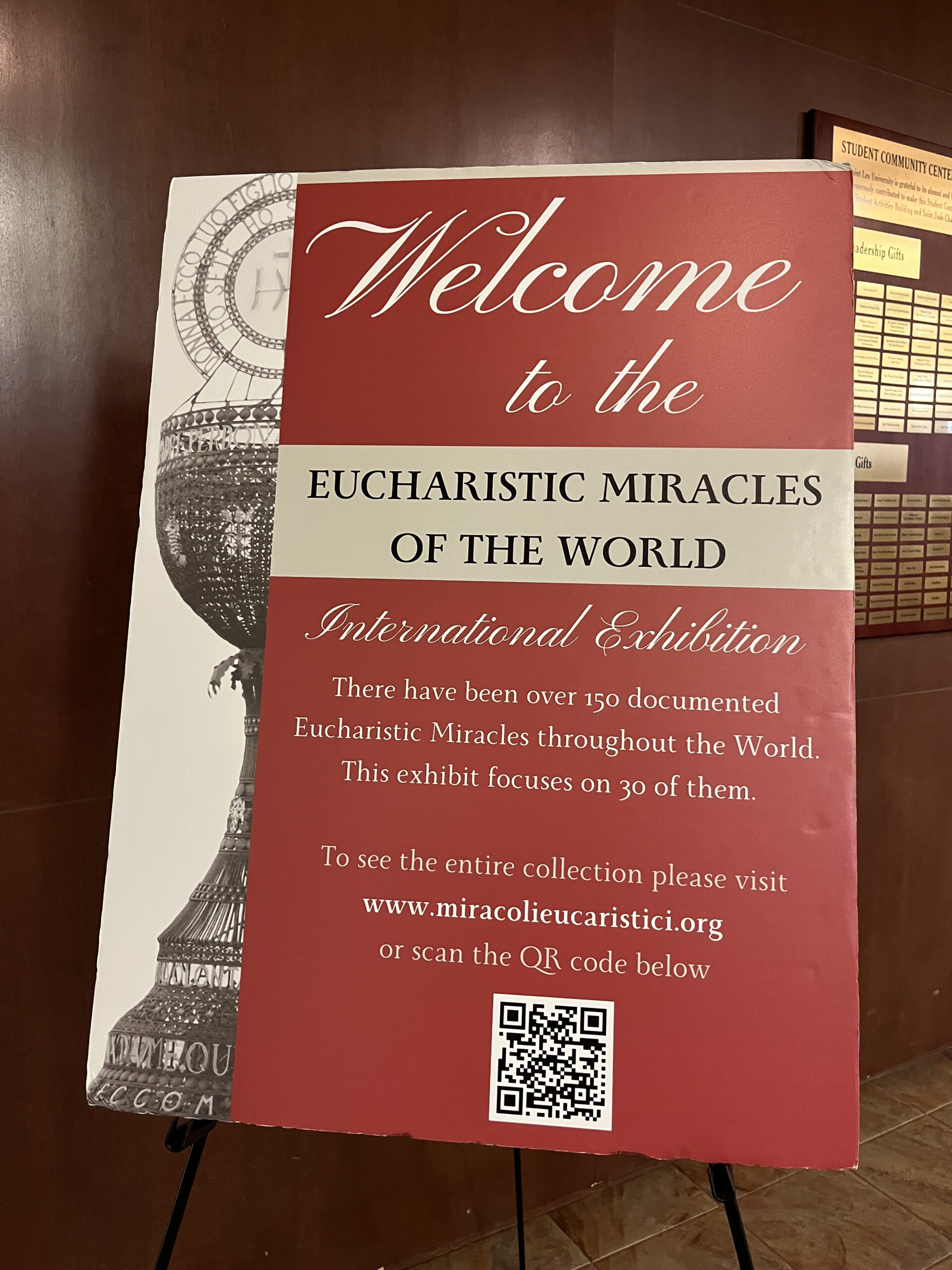

Various Eucharist-centric events hosted by different parishes and organizations have taken place all over the country with the hope of changing the lives of Catholics and non-Catholics alike.
Saint Leo University Ministry hosted its own Eucharistic revival event by showcasing a Eucharistic miracle exhibit featuring the Blessed Carlos Acutis.
Blessed Carlos Acutis played a significant role in the Eucharistic revival movement. Despite his young age of 15 when he passed away from leukemia, Carlo was deeply committed to prioritizing his life around the Eucharist. He made it a daily practice to attend Mass and spend time in prayer before the Eucharistic Lord, believing, as he expressed it, that “the Eucharist is my highway to heaven.” While maintaining a deep devotion to his Catholic faith, he also enjoyed typical activities of his age, such as playing Pokémon and video games in the 90s.
Notably, due to his expertise with technology, he cataloged all the Eucharistic miracles on a website he created before his passing.
Upon arrival, guests were able to walk around the boardroom to read and explore the fifty poster boards, each containing information about the Eucharistic miracles that have occurred around the world. Each infographic was compiled by Blessed Carlos Acutis.
Mary Worhacz, campus minister for University Ministry, was the key person responsible for organizing the event.
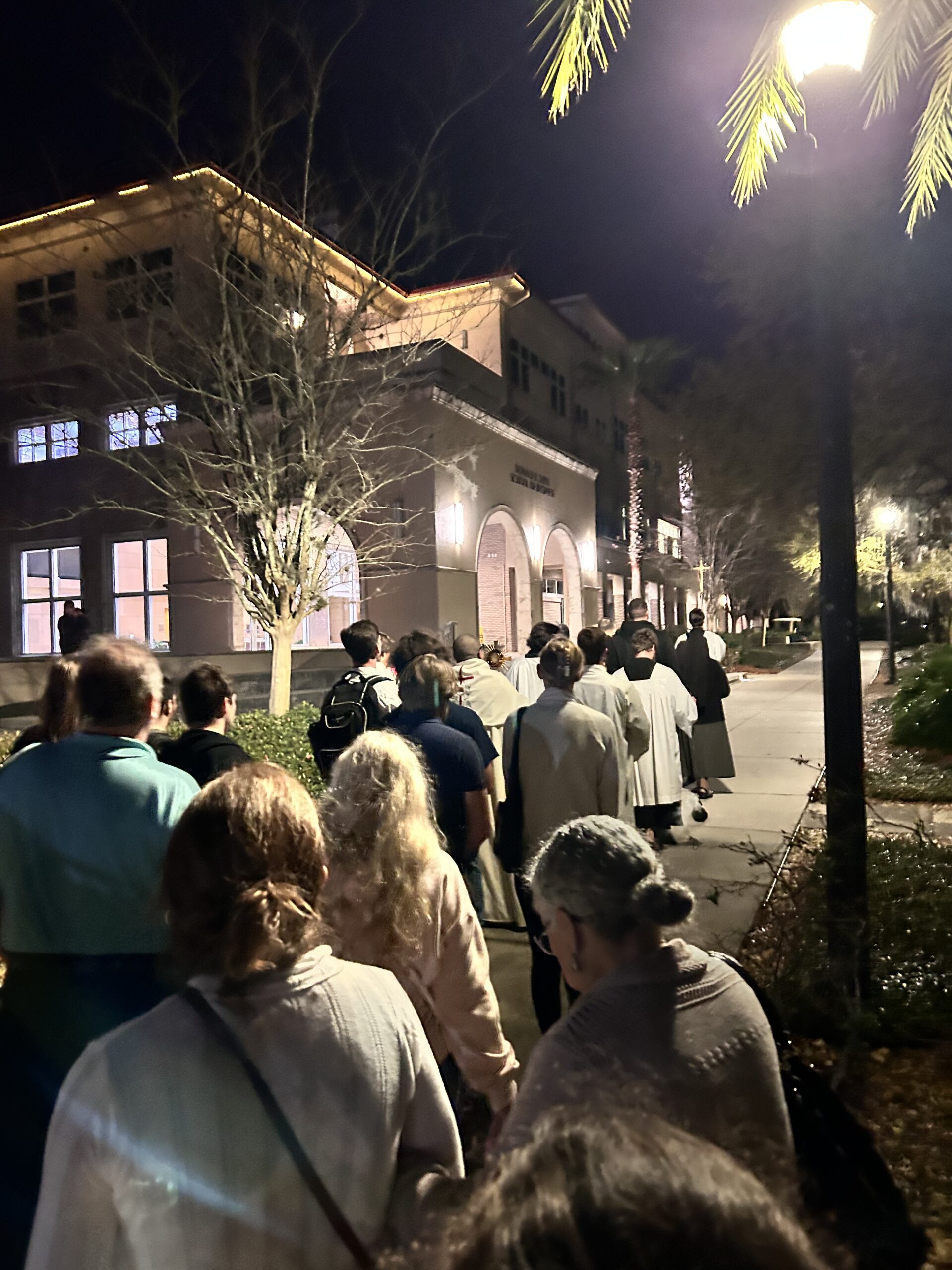
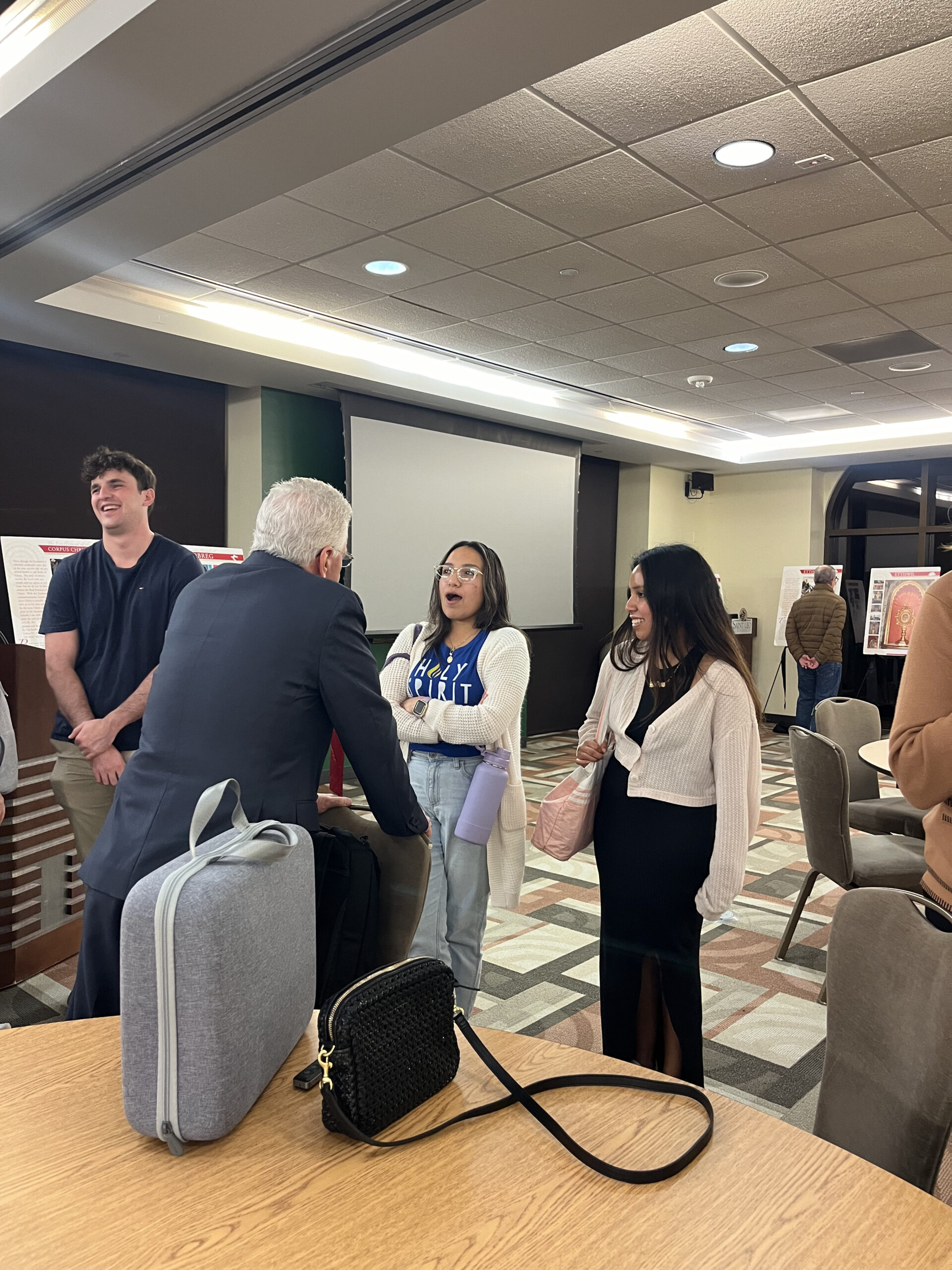

“I had a family member who put on this same event in New York, and when she told me about it, I was immediately blown away by how incredible it is to celebrate the Eucharistic Revival,” Worhacz says. “As I just got this job as campus minister this year, my number one goal was not just to celebrate the eucharistic revival in the church but also to have a Eucharistic Revival on this Saint Leo campus.”
She further attributes the success of the event to the assistance of Christ the King Catholic Church, as she worked with them to organize the event. Through the church’s support, she was able to meet the keynote speaker, Dr. Hector Villa Jr., MD.
Dr. Villa, a Tampa native, led the discussion with his talk titled “The Miracle of the Eucharistic Miracles: Medical Evidence.” While he credited some of the information discussed to the book “A Cardiologist Examines Jesus: The Stunning Science Behind Eucharistic Miracles” by prominent cardiologist and author Dr. Franco Serafini, Dr. Villa’s perspective also stemmed from his medical background. Graduating from Lousianna State University (LSU) with a degree in chemical engineering, he later attended LSU’s medical school where he completed his residency in anesthesiology, specializing in pediatrics.
Starting off, Dr. Villa established key medical and scientific terms and theories such as confidence level and statistical significance to prepare those with a non-STEM background for the evidence to come. He progressed his talk by touching on who Blessed Carlos Acutis is, presenting five of the Eucharistic miracles, and breaking down the scientific evidence that was found.
Summary and conclusions from the analysis of various Eucharistic miracles revealed consistent findings across samples. Each miracle exhibited human blood, specifically of AB type, with tissue analysis showing living, inflamed human heart muscle.
Additionally, white blood cells, red blood cells, and hemoglobin were found, consistent with fresh blood, even in samples many years old. This scientific evidence, derived from testing, serves as proof of the power of the Eucharist. Furthermore, it has the ability to convince even those who may initially doubt its significance.
“I’m so convicted now because of the evidence, because of the science,” Villa says. “It spoke to me because I was an engineer, then I became a physician. This is the language I speak, so it absolutely convicted me.”
At the end of the session, Dr. Villa, along with Father Lucius Amarillas, encouraged the crowd to ask questions.
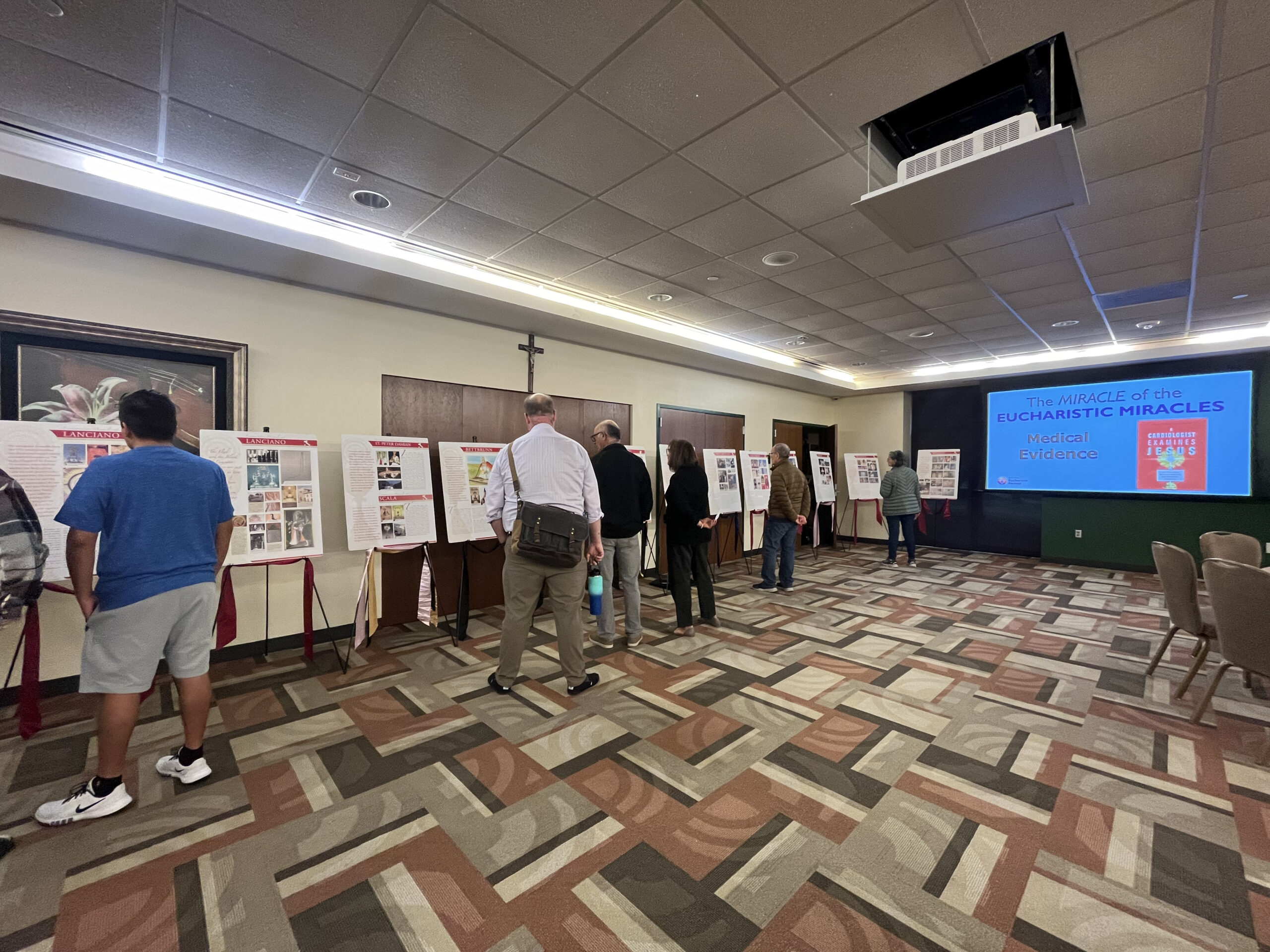
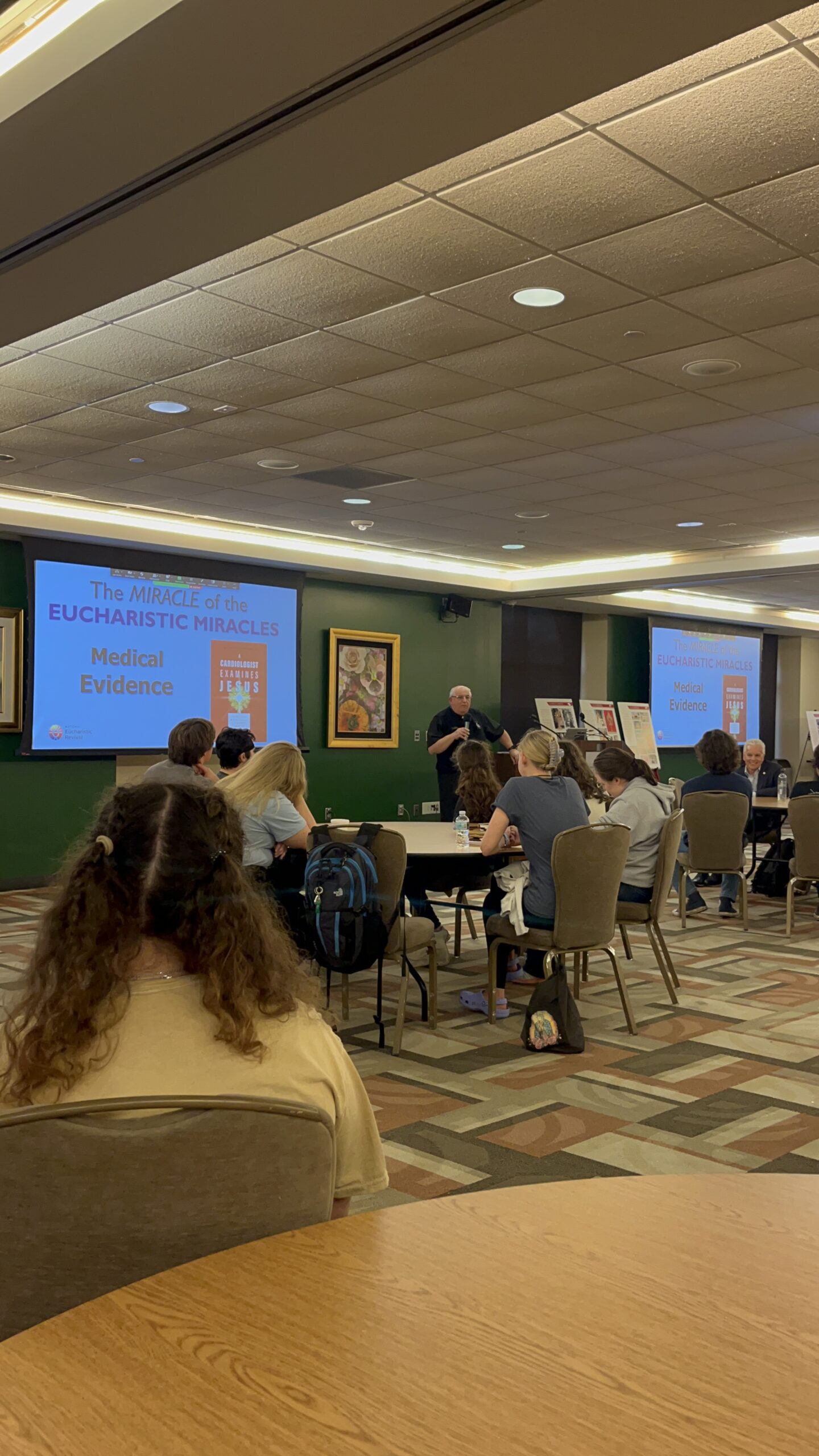
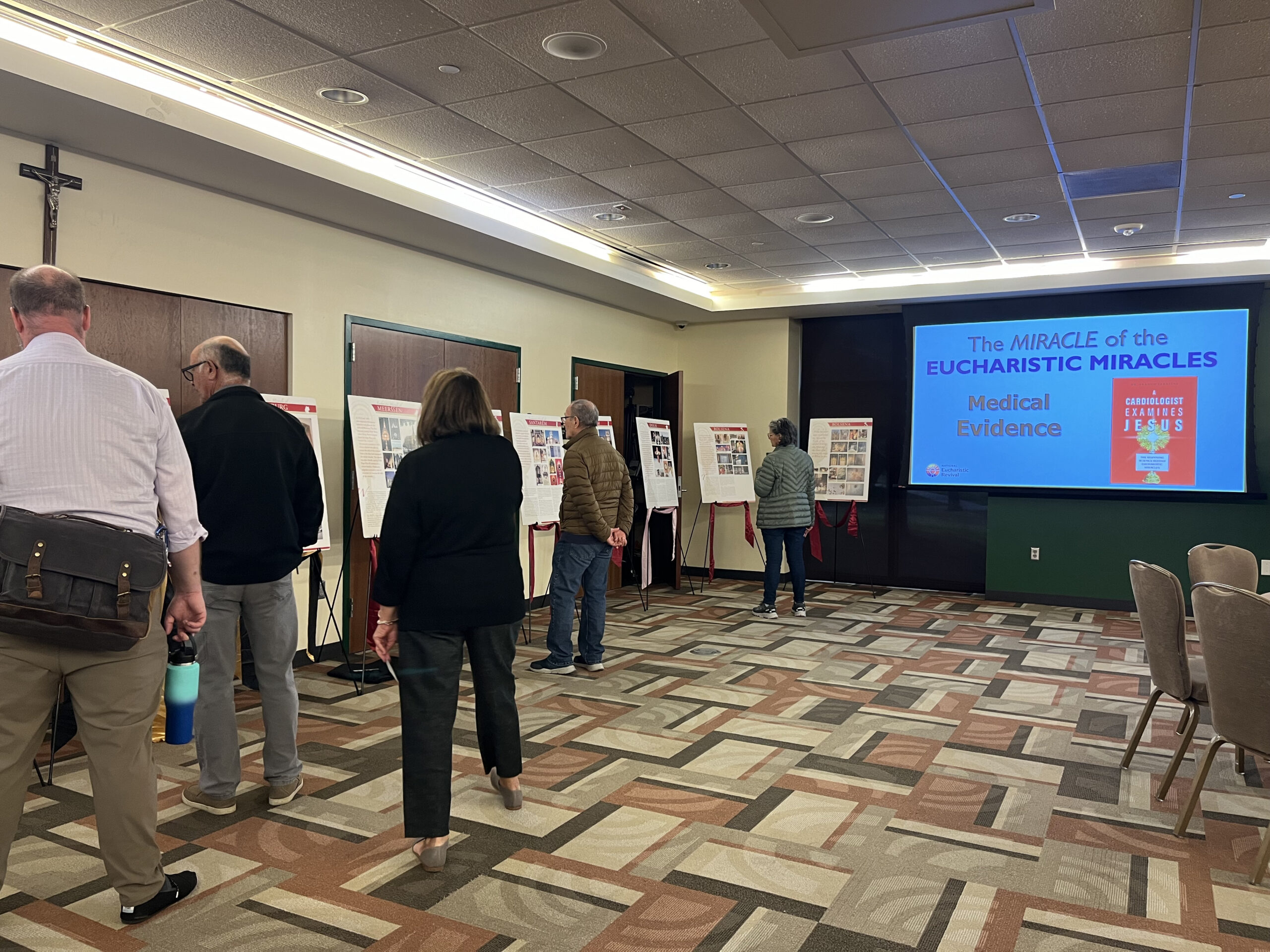
“Remember, our Catholic theological tradition is so rich because it has two organs: faith and reason. If you have questions, ask them. Hence why we have wonderful presentations like Dr. Villa’s shared, as well as our wonderful theological courses here at Saint Leo University,” stated Fr. Lucius. “It’s okay to ask questions; it’s not a sin. You have my word.”
The questions varied from seeking further explanations of the phenomena to personal inquiries about how Dr. Villa maintains such strong faith.
The presentation itself was powerful for students, both Catholic and non-Catholic.
Marian Semlow, a second-year biomedical and health sciences student, is currently going through the Rite of Christian Initiation of Adults (RCIA), the process whereby adults may be initiated into and fully enter the Catholic Church.
“I decided to come to this event because I haven’t been to one of the Catholic events yet, and thought this would be a great start,” Semlow said. “It helped me understand the Eucharist because I didn’t really know it completely. Especially being in a science major, I got to see the scientific side of it, which was one of the main reasons why I was not super strong with any religion. Now I want to do more research and read more on it.”
The event was open to anyone of any faith, and many took the opportunity to learn.
“After seeing the evidence, it’s hard to dispute that it is not the actual blood and body of Christ,” says Ruari Flick, a sophomore economics major. “Being a non-Catholic Christian, I don’t partake in the Eucharist, and I don’t either when I go to Mass out of respect. I think these miracles [are very strange], and that God is the only explanation for it.”
To conclude the night, attendees united in front of the St. Jude Chapel on campus and had a Eucharistic procession to the Saint Leo Abbey. In unity, they accompanied the body of Jesus back to the church.
“He who eats my flesh and drinks my blood has eternal life, and I will raise him up on the last day, for my flesh is true food and my blood is true drink,” Villa says, quoting John 6:53-56. “These are beautiful words.”

